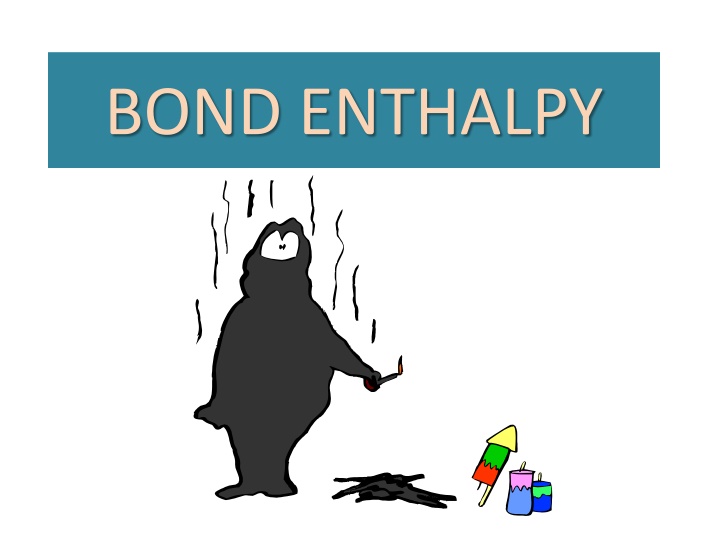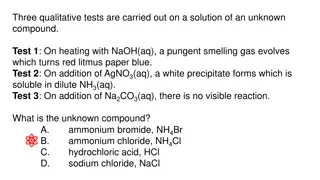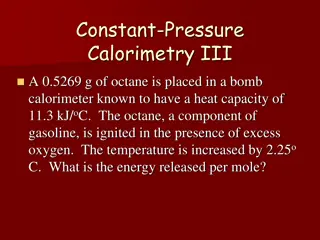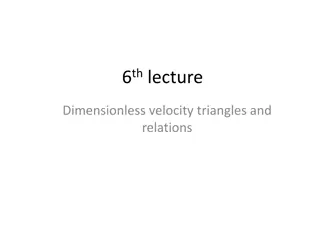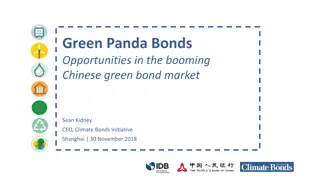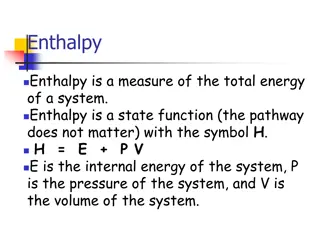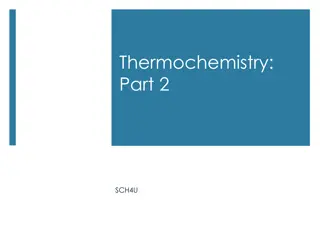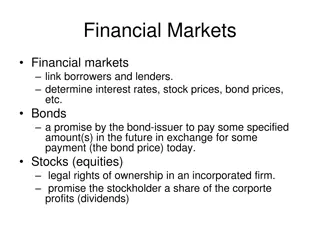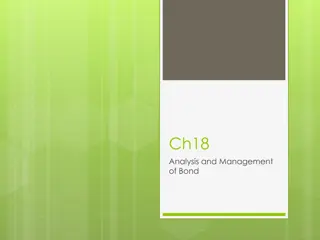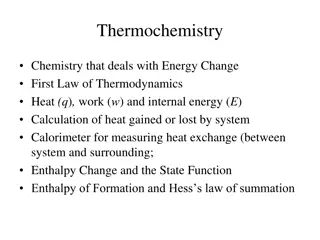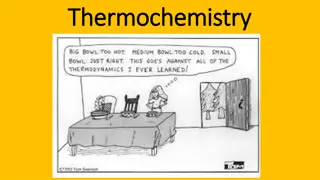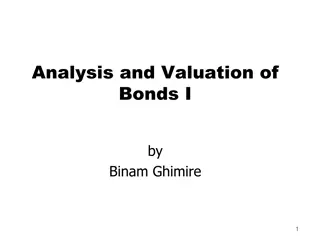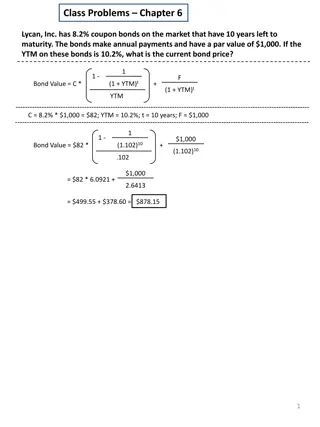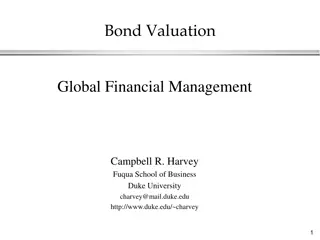Bond Enthalpy in Chemistry
Bond enthalpy represents the energy needed to break chemical bonds and is crucial in understanding the strength of these bonds. Explore concepts like bond length, potential energy diagrams, and bond energy calculations.
Download Presentation

Please find below an Image/Link to download the presentation.
The content on the website is provided AS IS for your information and personal use only. It may not be sold, licensed, or shared on other websites without obtaining consent from the author.If you encounter any issues during the download, it is possible that the publisher has removed the file from their server.
You are allowed to download the files provided on this website for personal or commercial use, subject to the condition that they are used lawfully. All files are the property of their respective owners.
The content on the website is provided AS IS for your information and personal use only. It may not be sold, licensed, or shared on other websites without obtaining consent from the author.
E N D
Presentation Transcript
Bond Enthalpy The enthalpy associated with breaking one mole of a particular bond in a gaseous substance.
Potential Energy Diagram The overall energy term involved is due to the net potential energy, which results from the attractive & repulsive forces between charged particles, and the Kinetic energy due to the motion of the electrons. The zero point energy is defined as where the atoms are at infinite separation. At very short distances the energy rises steeply due to the repulsive forces that exist when atoms are close together. The bond length is at a distance where the system has minimal energy.
Bond Enthalpy The bond enthalpy is always positive because energy is required to break chemical bonds. Energy is always released when a bond forms between gaseous fragments. The greater the bond enthalpy, the stronger the bond.
BOND LENGTH THE DISTANCE BETWEEN NUCLEI AT ITS MINIMUM ENERGY. In order to break covalent bonds the BOND DISSOCIATION ENERGY must be added to the system. In general the larger the BDE, the stronger the bond. Average bond lengths can be estimated by using the trends in the periodic table. C-C 1.54 A C=C 1.34 A C C 1.20 A
Bond Energy (also called Enthalpy) BDE the difference between the standard molar enthalpies of a molecule X-Y and its fragments X and Y .NOTE: This is an APPROXIMATION! BDE is the energy required to overcome the attraction between two atoms in a bond, it is related to the bond strength. It is the standard enthalpy change for breaking a bond in 1 mol of gaseous molecules. If: H = BE (bonds broken) BE (bonds made) H break > 0 endothermic H formation 0 exothermic
STEP 1: Drawing Lewis Structures Step 1: Calculate the total number of valence electrons in the molecule or ion Step 2: Determine the central atom(s) of the molecule or ion usually it s the least electronegative atom. Step 3: Draw a tentative diagram for the molecule or ion. Rules a) A hydrogen atom always forms one bond. Hydrogen is always a terminal atom in a Lewis diagram an atom that is bonded to only one other atom. b) A carbon atom normally forms four bonds c) When several carbon atoms appear in the same molecule, the are often bonded to each other.
Bond Enthalpies and Enthalpy of Reaction Add bond energy for all bonds made (+) Subtract bond energy for all bonds broken ( ) The result is an estimate of H. ( ) ( ) bond enthalpies of bonds broken bond enthalpies of bonds fromed = H rxn
Bond Enthalpies and Enthalpy of Reaction So, we can predict whether a chemical reaction will be endothermic or exothermic using bond energies.
Bond Energies (Enthalpies) BDE H = BE (bonds broken) BE (bonds made) A. All bond enthalpies listed in your textbook are POSITIVE because heat must be supplied to break a bond. B. Therefore, bond breaking is always ENDOTHERMIC, and bond formations is always EXOTHERMIC. C. Assume that the average bond energy applies regardless of the specific molecular environment; intermolecular interactions are expected to be minimal and hence are NOT taken into account. D. These calculations are limited to cases where ALL reactants/products are in the gas phase!
Estimate the Enthalpy of the Following Reaction H2(g) + O2(g) H2O2(g) reaction involves breaking 1mol H-H and 1 mol O=O and making 2 mol H-O and 1 mol O-O bonds broken (energy cost) (+436 kJ) + (+498 kJ) = +934 kJ bonds made (energy release) 2(464 kJ) + (142 kJ) = -1070 Hrxn = (+934 kJ) + (-1070. kJ) = -136 kJ (Appendix H f = -136.3 kJ/mol) 13
Examples on Bond Energy Problem #1: Estimate the enthalpy change of the reaction between gaseous iodoethane and water vapor: CH3CH2I(g) + H2O(g) Bond Energies (kJ/mol): C-O C-I CH3CH2OH(g) + HI(g) 360 238 H-O H-I 463 299
Examples on Bond Energy Problem #2: Estimate the standard enthalpy of the following reaction: CCl3CHCl2(g) + 2HF(g) Bond Energies (kJ/mol): C-F H-F CCl3CHF2(g) + 2HCl(g) 485 565 C-Cl 339 H-Cl 431
